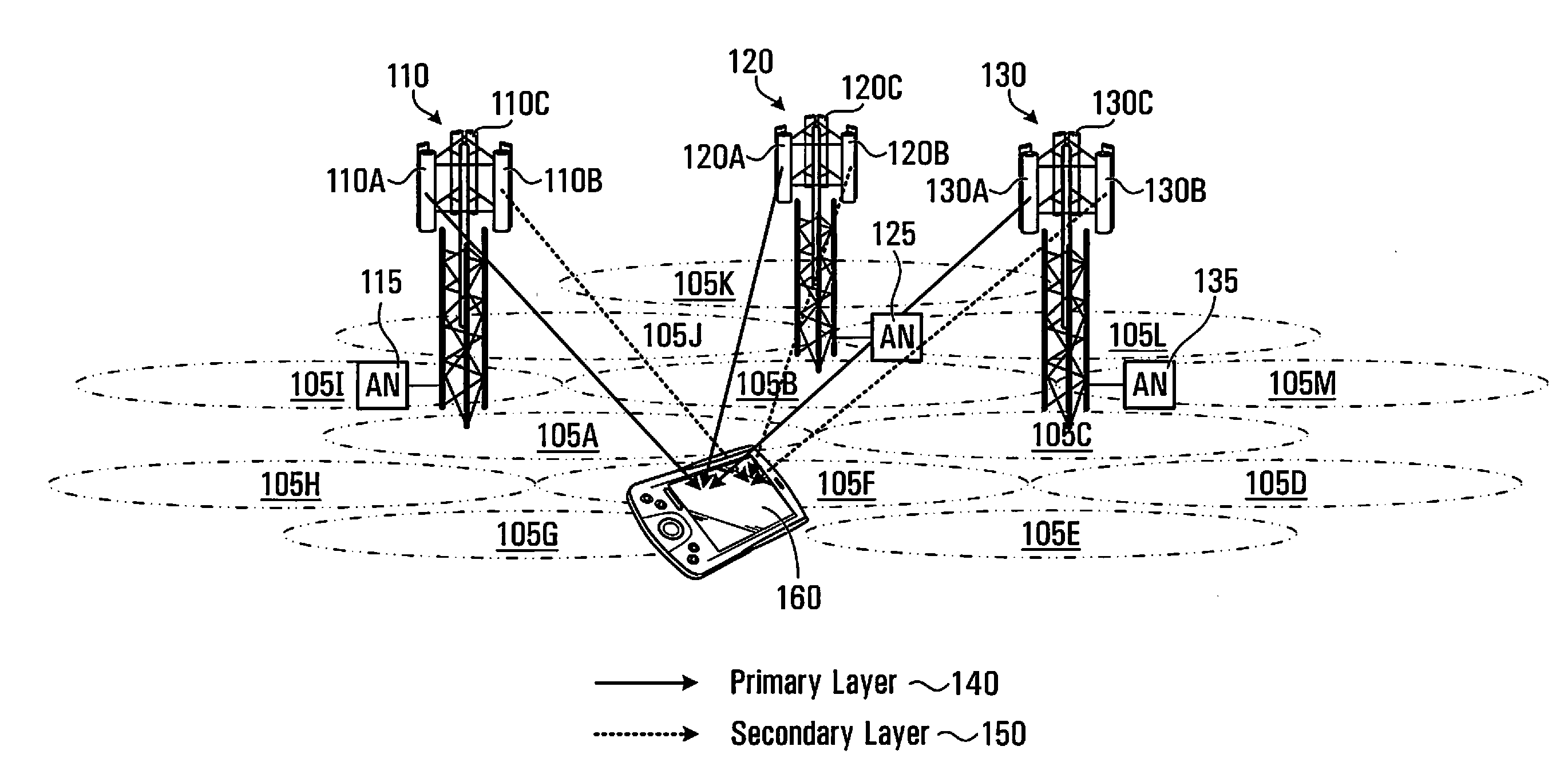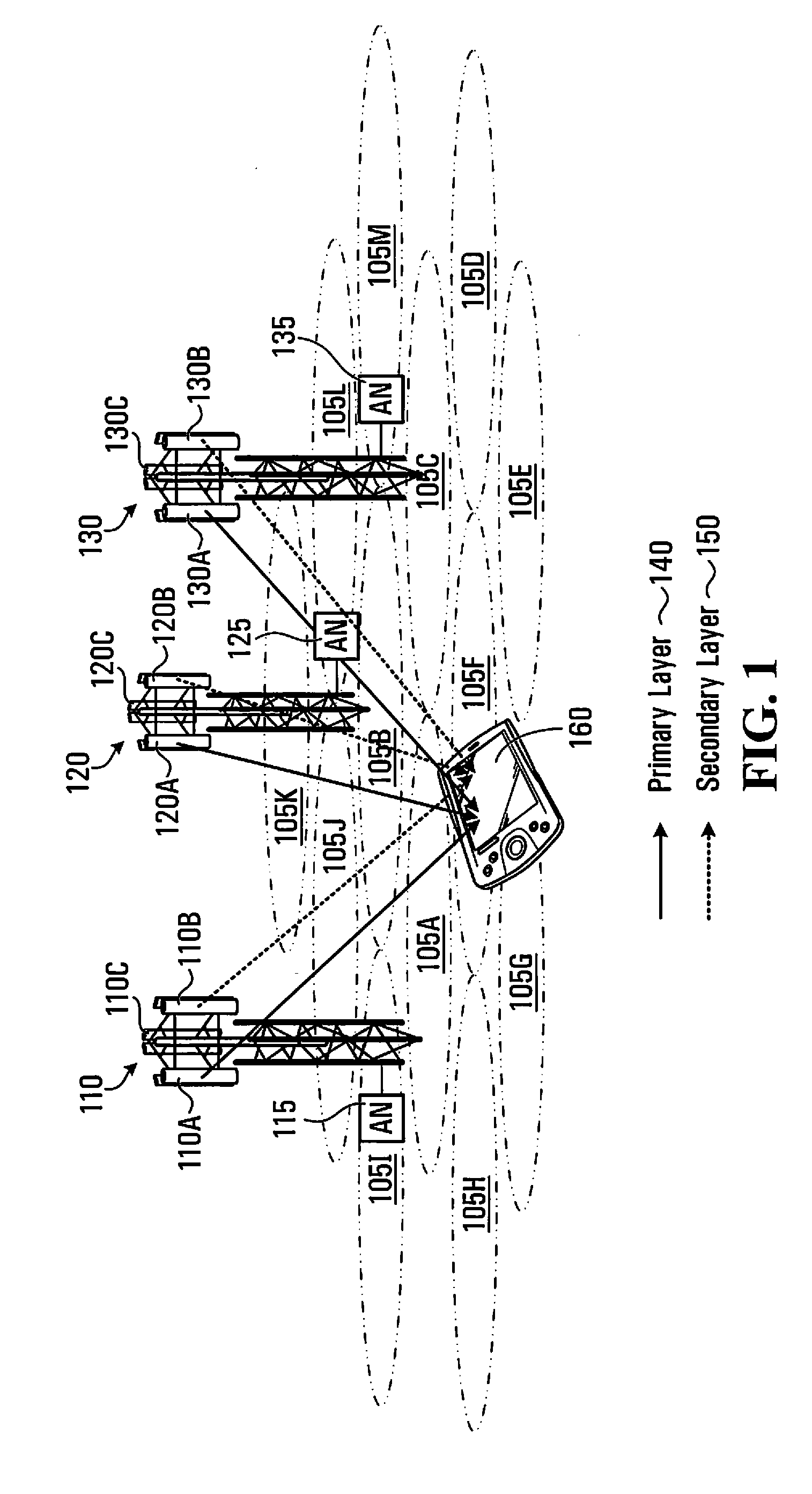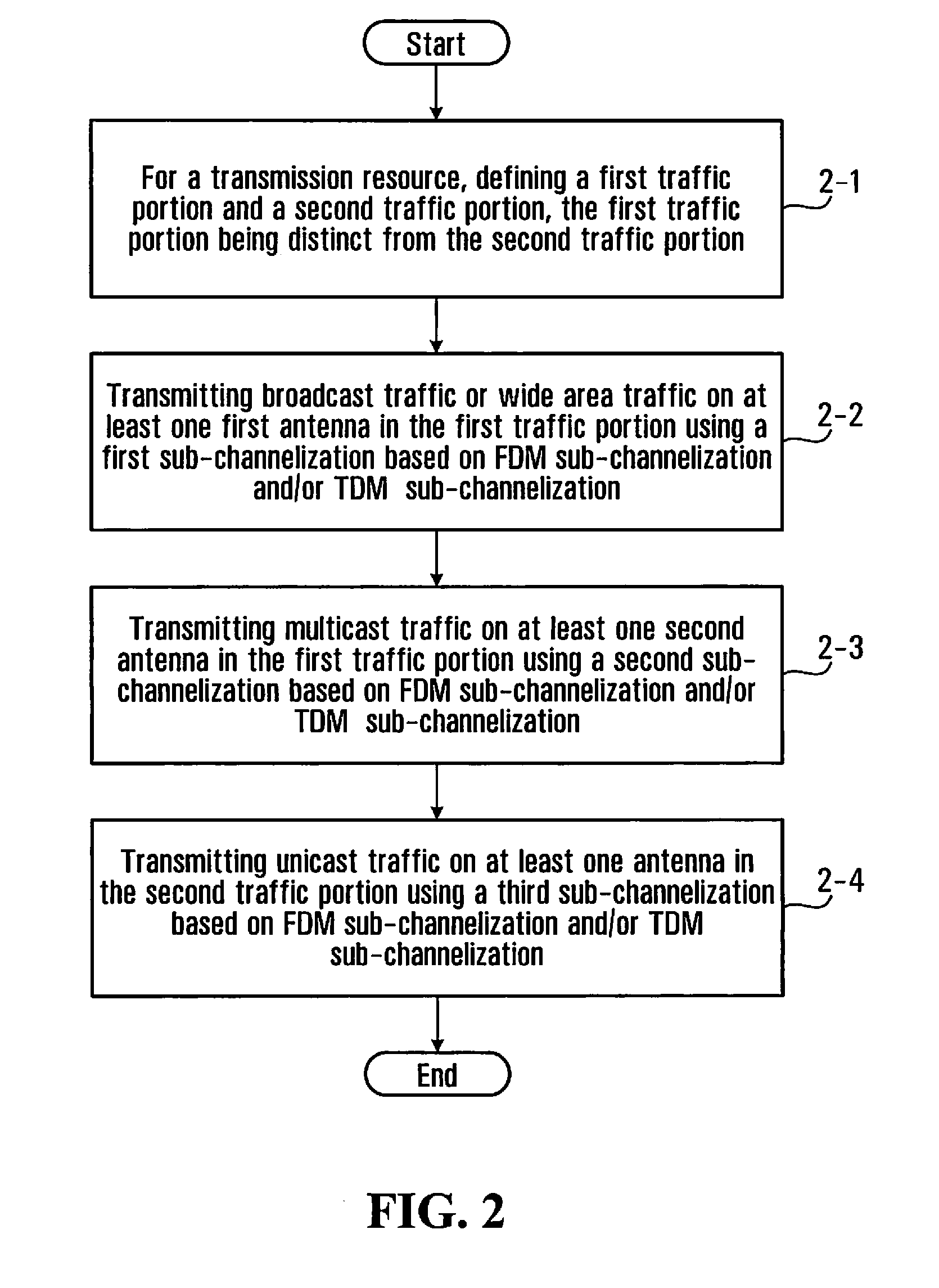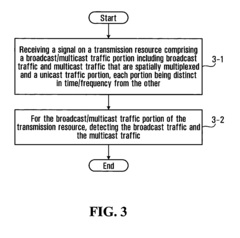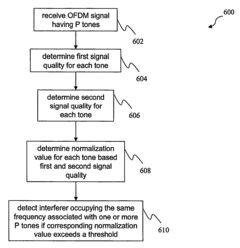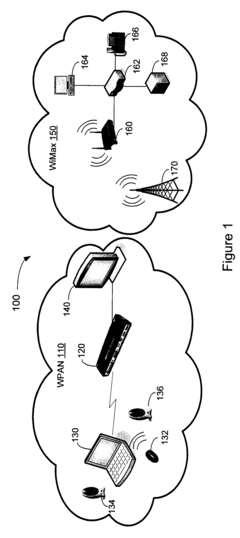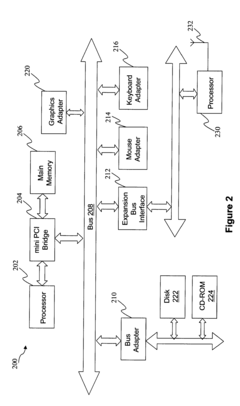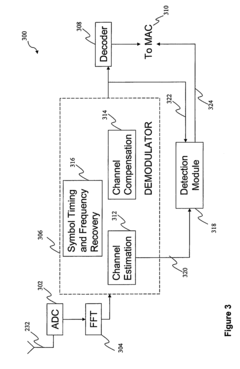OFDM Vs PAM: Evaluating for Long-Distance Transmissions
SEP 12, 20259 MIN READ
Generate Your Research Report Instantly with AI Agent
Patsnap Eureka helps you evaluate technical feasibility & market potential.
OFDM and PAM Technology Evolution and Objectives
The evolution of digital communication technologies has been marked by continuous innovation in modulation techniques. Orthogonal Frequency Division Multiplexing (OFDM) and Pulse Amplitude Modulation (PAM) represent two significant approaches that have shaped modern telecommunications. OFDM emerged in the 1960s but gained prominence in the 1990s with wireless applications, while PAM has a longer history dating back to early telegraph systems, evolving substantially through the digital era.
OFDM's development trajectory has been characterized by its ability to combat multipath fading and interference in wireless channels. The technology divides a single high-rate data stream into multiple lower-rate streams transmitted simultaneously over different subcarriers, offering remarkable spectral efficiency. Its adoption accelerated with the implementation of Fast Fourier Transform (FFT) algorithms, which significantly reduced computational complexity and made OFDM commercially viable.
PAM, conversely, has evolved from simple amplitude-based signaling to sophisticated multi-level implementations. The technology progressed from 2-PAM (binary) to advanced configurations like PAM-4, PAM-8, and PAM-16, each offering increased data rates at the cost of more complex signal detection requirements. PAM's evolution has been closely tied to advances in digital signal processing and analog-to-digital conversion technologies.
The technical objectives for both modulation schemes in long-distance transmission contexts differ substantially. OFDM aims to maximize spectral efficiency while maintaining robustness against frequency-selective fading and narrowband interference. Its design objectives include minimizing inter-symbol interference through cyclic prefix implementation and optimizing power allocation across subcarriers to enhance transmission reliability over varying channel conditions.
PAM's objectives center on achieving high data rates with reduced complexity in implementation. For long-distance applications, PAM systems focus on optimizing signal-to-noise ratio performance, minimizing inter-symbol interference through advanced equalization techniques, and reducing power consumption—critical factors for backbone network infrastructure.
Recent technological trends indicate convergence in some applications, with hybrid approaches combining elements of both modulation schemes. The evolution continues toward adaptive modulation systems that can dynamically select optimal parameters based on channel conditions, distance requirements, and application-specific quality of service needs.
The technical trajectory suggests future developments will focus on enhancing energy efficiency, increasing spectral utilization, and improving resilience to various channel impairments specific to long-haul transmission environments. Both technologies are evolving toward supporting higher-order modulation formats and incorporating machine learning algorithms for dynamic optimization of transmission parameters.
OFDM's development trajectory has been characterized by its ability to combat multipath fading and interference in wireless channels. The technology divides a single high-rate data stream into multiple lower-rate streams transmitted simultaneously over different subcarriers, offering remarkable spectral efficiency. Its adoption accelerated with the implementation of Fast Fourier Transform (FFT) algorithms, which significantly reduced computational complexity and made OFDM commercially viable.
PAM, conversely, has evolved from simple amplitude-based signaling to sophisticated multi-level implementations. The technology progressed from 2-PAM (binary) to advanced configurations like PAM-4, PAM-8, and PAM-16, each offering increased data rates at the cost of more complex signal detection requirements. PAM's evolution has been closely tied to advances in digital signal processing and analog-to-digital conversion technologies.
The technical objectives for both modulation schemes in long-distance transmission contexts differ substantially. OFDM aims to maximize spectral efficiency while maintaining robustness against frequency-selective fading and narrowband interference. Its design objectives include minimizing inter-symbol interference through cyclic prefix implementation and optimizing power allocation across subcarriers to enhance transmission reliability over varying channel conditions.
PAM's objectives center on achieving high data rates with reduced complexity in implementation. For long-distance applications, PAM systems focus on optimizing signal-to-noise ratio performance, minimizing inter-symbol interference through advanced equalization techniques, and reducing power consumption—critical factors for backbone network infrastructure.
Recent technological trends indicate convergence in some applications, with hybrid approaches combining elements of both modulation schemes. The evolution continues toward adaptive modulation systems that can dynamically select optimal parameters based on channel conditions, distance requirements, and application-specific quality of service needs.
The technical trajectory suggests future developments will focus on enhancing energy efficiency, increasing spectral utilization, and improving resilience to various channel impairments specific to long-haul transmission environments. Both technologies are evolving toward supporting higher-order modulation formats and incorporating machine learning algorithms for dynamic optimization of transmission parameters.
Market Demand Analysis for Long-Distance Transmission Technologies
The global market for long-distance transmission technologies has experienced significant growth in recent years, driven by increasing demand for high-speed data transmission across various sectors. The telecommunications industry leads this demand, with fiber optic networks expanding at an annual rate of 8.1% globally as operators upgrade infrastructure to support 5G networks and beyond. This expansion requires more efficient modulation schemes that can maximize bandwidth utilization while maintaining signal integrity over extended distances.
Enterprise data centers represent another major market segment, with their interconnect requirements growing exponentially as cloud computing and big data applications proliferate. According to industry reports, data center interconnect (DCI) bandwidth requirements are doubling approximately every 24 months, creating substantial demand for transmission technologies that can support 400G, 800G, and emerging terabit-per-second speeds over increasingly longer distances.
Submarine cable systems constitute a particularly demanding application for long-distance transmission technologies. With over 1.3 million kilometers of submarine cables currently installed worldwide and dozens of new systems planned over the next five years, there is strong market pull for modulation schemes that can maximize capacity while minimizing the need for signal regeneration. The economic implications are substantial, as each submarine repeater adds millions to project costs.
The satellite communications sector is also emerging as a significant market driver, with low-Earth orbit (LEO) constellations requiring efficient ground-to-space transmission technologies. The number of operational satellites has more than doubled in the past decade, creating new requirements for robust modulation schemes that can maintain performance despite atmospheric interference and extreme distances.
From a regional perspective, Asia-Pacific currently represents the largest market for advanced transmission technologies, accounting for approximately 35% of global demand. This is primarily driven by China's ambitious fiber infrastructure initiatives and India's rapid digital transformation. North America follows closely behind, with particular emphasis on upgrading aging infrastructure to support next-generation applications.
Industry forecasts suggest that the global market for advanced modulation technologies like OFDM and PAM will reach $12.7 billion by 2027, representing a compound annual growth rate of 9.3%. This growth is being accelerated by emerging applications in autonomous vehicles, smart cities, and industrial automation, all of which require reliable long-distance data transmission capabilities.
The competitive landscape is increasingly focused on technologies that can deliver not only greater bandwidth but also improved energy efficiency. With data centers now consuming more than 1% of global electricity, there is growing market pressure for transmission technologies that can reduce power consumption per bit transmitted, particularly over long distances.
Enterprise data centers represent another major market segment, with their interconnect requirements growing exponentially as cloud computing and big data applications proliferate. According to industry reports, data center interconnect (DCI) bandwidth requirements are doubling approximately every 24 months, creating substantial demand for transmission technologies that can support 400G, 800G, and emerging terabit-per-second speeds over increasingly longer distances.
Submarine cable systems constitute a particularly demanding application for long-distance transmission technologies. With over 1.3 million kilometers of submarine cables currently installed worldwide and dozens of new systems planned over the next five years, there is strong market pull for modulation schemes that can maximize capacity while minimizing the need for signal regeneration. The economic implications are substantial, as each submarine repeater adds millions to project costs.
The satellite communications sector is also emerging as a significant market driver, with low-Earth orbit (LEO) constellations requiring efficient ground-to-space transmission technologies. The number of operational satellites has more than doubled in the past decade, creating new requirements for robust modulation schemes that can maintain performance despite atmospheric interference and extreme distances.
From a regional perspective, Asia-Pacific currently represents the largest market for advanced transmission technologies, accounting for approximately 35% of global demand. This is primarily driven by China's ambitious fiber infrastructure initiatives and India's rapid digital transformation. North America follows closely behind, with particular emphasis on upgrading aging infrastructure to support next-generation applications.
Industry forecasts suggest that the global market for advanced modulation technologies like OFDM and PAM will reach $12.7 billion by 2027, representing a compound annual growth rate of 9.3%. This growth is being accelerated by emerging applications in autonomous vehicles, smart cities, and industrial automation, all of which require reliable long-distance data transmission capabilities.
The competitive landscape is increasingly focused on technologies that can deliver not only greater bandwidth but also improved energy efficiency. With data centers now consuming more than 1% of global electricity, there is growing market pressure for transmission technologies that can reduce power consumption per bit transmitted, particularly over long distances.
Current Technical Challenges in Long-Distance Signal Transmission
Long-distance signal transmission faces numerous technical challenges that significantly impact system performance and reliability. The primary obstacle remains signal attenuation, where transmission power decreases exponentially with distance, particularly affecting high-frequency components essential for high data rates. This necessitates careful modulation scheme selection between OFDM and PAM technologies.
Signal dispersion presents another critical challenge, manifesting as both chromatic dispersion in optical systems and multipath fading in wireless communications. These phenomena cause signal pulses to spread temporally, creating inter-symbol interference (ISI) that degrades transmission quality. OFDM's multi-carrier approach offers inherent resistance to multipath effects, while PAM requires complex equalization techniques to mitigate ISI.
Noise accumulation compounds these difficulties, with thermal noise, amplifier noise, and environmental interference all increasing with transmission distance. The signal-to-noise ratio (SNR) deteriorates progressively, establishing fundamental limits on achievable data rates as described by Shannon's capacity theorem. OFDM and PAM differ significantly in their noise resilience characteristics under varying channel conditions.
Nonlinear distortion effects become increasingly problematic at higher power levels often required for long-distance transmission. In optical systems, phenomena like four-wave mixing and self-phase modulation distort signals, while in wireless systems, amplifier nonlinearities create intermodulation products. OFDM's high peak-to-average power ratio (PAPR) makes it particularly vulnerable to nonlinear effects compared to PAM's more constant envelope.
Synchronization represents a substantial technical hurdle, with timing and frequency offsets accumulating over distance. Long-haul systems must maintain precise synchronization despite propagation delays and oscillator drift. OFDM systems are notably sensitive to frequency offsets that destroy subcarrier orthogonality, while PAM systems primarily contend with timing recovery challenges.
Power consumption efficiency becomes increasingly critical as transmission distances extend. Signal amplification, error correction coding, and digital signal processing all contribute to energy requirements that scale with distance. The energy-per-bit metric varies significantly between modulation schemes, with OFDM typically requiring more complex processing but potentially offering better spectral efficiency.
Lastly, adaptive modulation capabilities present ongoing challenges, as optimal transmission parameters vary with changing channel conditions. Dynamic adjustment of modulation order, coding rate, and power allocation becomes essential for maintaining reliable communication across variable environments. OFDM offers flexibility through subcarrier-specific adaptation, while PAM systems typically implement adaptation at the symbol level.
Signal dispersion presents another critical challenge, manifesting as both chromatic dispersion in optical systems and multipath fading in wireless communications. These phenomena cause signal pulses to spread temporally, creating inter-symbol interference (ISI) that degrades transmission quality. OFDM's multi-carrier approach offers inherent resistance to multipath effects, while PAM requires complex equalization techniques to mitigate ISI.
Noise accumulation compounds these difficulties, with thermal noise, amplifier noise, and environmental interference all increasing with transmission distance. The signal-to-noise ratio (SNR) deteriorates progressively, establishing fundamental limits on achievable data rates as described by Shannon's capacity theorem. OFDM and PAM differ significantly in their noise resilience characteristics under varying channel conditions.
Nonlinear distortion effects become increasingly problematic at higher power levels often required for long-distance transmission. In optical systems, phenomena like four-wave mixing and self-phase modulation distort signals, while in wireless systems, amplifier nonlinearities create intermodulation products. OFDM's high peak-to-average power ratio (PAPR) makes it particularly vulnerable to nonlinear effects compared to PAM's more constant envelope.
Synchronization represents a substantial technical hurdle, with timing and frequency offsets accumulating over distance. Long-haul systems must maintain precise synchronization despite propagation delays and oscillator drift. OFDM systems are notably sensitive to frequency offsets that destroy subcarrier orthogonality, while PAM systems primarily contend with timing recovery challenges.
Power consumption efficiency becomes increasingly critical as transmission distances extend. Signal amplification, error correction coding, and digital signal processing all contribute to energy requirements that scale with distance. The energy-per-bit metric varies significantly between modulation schemes, with OFDM typically requiring more complex processing but potentially offering better spectral efficiency.
Lastly, adaptive modulation capabilities present ongoing challenges, as optimal transmission parameters vary with changing channel conditions. Dynamic adjustment of modulation order, coding rate, and power allocation becomes essential for maintaining reliable communication across variable environments. OFDM offers flexibility through subcarrier-specific adaptation, while PAM systems typically implement adaptation at the symbol level.
Comparative Analysis of OFDM and PAM Implementation Approaches
01 OFDM Transmission Efficiency Optimization
Orthogonal Frequency Division Multiplexing (OFDM) systems can be optimized for transmission efficiency through various techniques. These include adaptive modulation schemes, efficient subcarrier allocation, and advanced signal processing methods. By dynamically adjusting parameters based on channel conditions, OFDM systems can achieve higher data rates while maintaining reliability. These optimizations help reduce overhead and maximize spectral efficiency in wireless communication systems.- OFDM transmission efficiency optimization: Orthogonal Frequency Division Multiplexing (OFDM) systems can be optimized for transmission efficiency through various techniques. These include adaptive modulation schemes, efficient subcarrier allocation, and reduced peak-to-average power ratio (PAPR) methods. By optimizing these parameters, OFDM systems can achieve higher data rates while maintaining reliability in challenging channel conditions.
- PAM modulation for enhanced spectral efficiency: Pulse Amplitude Modulation (PAM) techniques can significantly improve spectral efficiency in digital communications. Higher-order PAM schemes (such as PAM-4, PAM-8, etc.) encode more bits per symbol, increasing data throughput without expanding bandwidth requirements. These techniques are particularly valuable in bandwidth-limited channels where maximizing bits per hertz is critical.
- Hybrid OFDM-PAM modulation systems: Combining OFDM with PAM modulation creates hybrid systems that leverage advantages of both techniques. These hybrid approaches can optimize transmission efficiency by using OFDM's multipath interference resistance while incorporating PAM's amplitude efficiency. Such combinations are particularly effective in environments with varying channel conditions, allowing for dynamic adaptation to maximize throughput.
- Error correction and channel coding for modulation efficiency: Advanced error correction and channel coding techniques significantly enhance the transmission efficiency of both OFDM and PAM systems. Forward Error Correction (FEC), Low-Density Parity-Check (LDPC) codes, and Turbo codes can be optimized for specific modulation schemes to improve reliability without sacrificing throughput. These techniques allow systems to operate closer to theoretical channel capacity limits.
- Multi-carrier modulation techniques for bandwidth efficiency: Multi-carrier modulation approaches enhance transmission efficiency by dividing available bandwidth into multiple subchannels. These techniques include variations of OFDM such as OFDMA (Orthogonal Frequency Division Multiple Access) and SC-FDMA (Single-Carrier Frequency Division Multiple Access). By optimizing carrier allocation and modulation parameters for each subchannel, these systems can maximize overall spectral efficiency while maintaining robustness against interference.
02 PAM Modulation for Enhanced Spectral Efficiency
Pulse Amplitude Modulation (PAM) techniques can significantly improve transmission efficiency by encoding multiple bits per symbol. Higher-order PAM schemes (such as PAM-4, PAM-8, etc.) increase data throughput without expanding bandwidth requirements. Implementation includes advanced equalization techniques to mitigate inter-symbol interference and noise effects. These approaches are particularly valuable in bandwidth-constrained environments where maximizing bits per hertz is critical.Expand Specific Solutions03 Hybrid OFDM-PAM Systems
Combining OFDM and PAM modulation techniques creates hybrid systems that leverage advantages of both approaches. These hybrid systems can achieve improved transmission efficiency through optimized resource allocation, reduced peak-to-average power ratio, and enhanced resistance to channel impairments. The integration allows for flexible adaptation to varying channel conditions while maintaining high spectral efficiency and reliability across diverse communication environments.Expand Specific Solutions04 Error Correction and Channel Coding for Modulation Efficiency
Advanced error correction and channel coding techniques significantly enhance the transmission efficiency of both OFDM and PAM modulation systems. Forward error correction codes, interleaving, and adaptive coding rates allow these systems to operate reliably at lower signal-to-noise ratios. By optimizing the trade-off between coding overhead and error protection, these techniques maximize effective throughput while ensuring robust performance in challenging channel conditions.Expand Specific Solutions05 Multi-carrier Modulation Techniques for Bandwidth Efficiency
Multi-carrier modulation approaches enhance transmission efficiency by dividing the available spectrum into multiple narrowband channels. These techniques include advanced implementations of OFDM with optimized subcarrier spacing, guard intervals, and windowing methods. By efficiently utilizing the frequency domain and mitigating inter-carrier interference, these systems achieve higher spectral efficiency while maintaining robustness against frequency-selective fading and other channel impairments.Expand Specific Solutions
Key Industry Players in Modulation Technology Development
The OFDM vs PAM competition for long-distance transmissions is currently in a mature growth phase, with the global market estimated at $15-20 billion annually. OFDM technology dominates due to its superior spectral efficiency and multipath interference resistance, evidenced by its widespread adoption by industry leaders Samsung, Qualcomm, and Huawei. PAM remains relevant in specific applications requiring simpler implementation. The technological landscape shows Samsung and Huawei leading OFDM innovation through extensive patent portfolios, while Qualcomm and Intel focus on hybrid solutions. Ericsson and Nokia maintain strong positions in infrastructure deployment, with emerging competition from ZTE and MediaTek challenging established players through cost-effective alternatives.
QUALCOMM, Inc.
Technical Solution: Qualcomm has developed sophisticated OFDM implementations optimized for long-distance mobile communications. Their approach leverages multi-user MIMO-OFDM systems with specialized cyclic prefix configurations that extend effective range while minimizing overhead. For extreme long-distance scenarios, Qualcomm employs adaptive subcarrier allocation that concentrates power in bands with favorable propagation characteristics[1]. Their proprietary channel estimation algorithms are specifically designed to maintain coherence over extended distances where traditional techniques fail. Qualcomm has also explored PAM implementations for specific backhaul applications, developing a 4-PAM system with decision feedback equalization that achieves comparable performance to OFDM at lower computational complexity for point-to-point links exceeding 40km[3]. Their research indicates that while OFDM generally outperforms PAM in multipath environments, optimized PAM can be more power-efficient for certain long-distance applications with line-of-sight conditions.
Strengths: Industry-leading OFDM implementations with excellent multipath handling for non-line-of-sight long-distance scenarios, adaptive resource allocation optimized for varying channel conditions, and reduced latency compared to competitors. Weaknesses: Higher implementation complexity in mobile devices, increased power consumption due to sophisticated signal processing requirements, and greater sensitivity to phase noise in long-distance applications.
Telefonaktiebolaget LM Ericsson
Technical Solution: Ericsson has pioneered hybrid OFDM/PAM approaches for long-distance transmissions in their telecommunications infrastructure. Their technology implements a flexible modulation framework that can transition between OFDM and PAM depending on channel conditions and distance requirements. For extreme long-distance scenarios, Ericsson's system employs specialized PAM implementations with advanced equalization techniques that reduce complexity while maintaining acceptable bit error rates[2]. Their proprietary Digital Pre-Distortion (DPD) algorithms specifically address PAM's nonlinearity issues in long-haul applications. For fiber-optic backhaul, Ericsson has developed Discrete Multi-Tone (DMT) solutions—a variant of OFDM—that achieve superior performance over traditional PAM-4 in distances exceeding 80km without optical amplification[4]. Their adaptive bit loading algorithms optimize subcarrier utilization based on channel characteristics.
Strengths: Adaptive modulation approach provides flexibility across varying distances, reduced implementation complexity with PAM in certain scenarios, and excellent power efficiency for long-range deployments. Weaknesses: PAM components require more sophisticated equalization for multipath environments, and the hybrid approach introduces additional system complexity in the modulation selection logic.
Critical Patents and Research in Modulation Techniques
System and method for spatial multiplexing-based multiple antenna broadcast/multicast transmission
PatentInactiveUS20110235562A1
Innovation
- A method employing multiple antennas for spatial multiplexing, where broadcast and multicast traffic are transmitted using distinct sub-channelizations based on FDM or TDM, and unicast traffic is transmitted separately, with the option of overlapping or distinct frequency reuse factors, and including MIMO pilots for identification, to improve coverage and reduce interference.
Detection of interferers using divergence of signal quality estimates
PatentInactiveUS8081691B2
Innovation
- A method and system that utilize signal quality metrics such as error vector magnitude (EVM) and channel response (CR) to detect interferers by identifying discrepancies in their behavior, with a detection module in the OFDM receiver subsystem that compares normalization values to a threshold to determine the presence of an interferer, allowing for suppression of affected sub-carriers.
Energy Efficiency Considerations in Modulation Selection
Energy efficiency has emerged as a critical factor in the selection of modulation schemes for long-distance transmission systems. When comparing OFDM (Orthogonal Frequency Division Multiplexing) and PAM (Pulse Amplitude Modulation), energy consumption characteristics significantly influence their suitability for various applications, particularly in power-constrained environments.
OFDM demonstrates superior spectral efficiency but often requires more complex signal processing, resulting in higher computational power demands. The multiple carrier approach necessitates sophisticated digital signal processors (DSPs) that consume substantial energy during continuous operation. Additionally, OFDM systems typically require linear power amplifiers with lower efficiency to maintain the integrity of the multi-carrier signal and avoid intermodulation distortion, further increasing energy consumption.
In contrast, PAM employs a simpler single-carrier approach that generally requires less complex hardware implementations. This translates to reduced computational requirements and potentially lower energy consumption in the signal processing chain. PAM systems can often utilize more efficient non-linear power amplifiers, particularly at higher modulation orders, providing energy savings in transmission stages.
The peak-to-average power ratio (PAPR) represents another crucial energy efficiency consideration. OFDM inherently suffers from high PAPR due to its multi-carrier nature, requiring power amplifiers to operate with significant back-off from their maximum efficiency point. This inefficiency becomes particularly problematic in long-distance applications where transmission power constitutes a major portion of the overall energy budget.
Recent advancements in energy-efficient algorithms have somewhat mitigated OFDM's energy disadvantages. Techniques such as selective subcarrier activation and dynamic power allocation allow OFDM systems to optimize energy usage based on channel conditions. Similarly, PAM implementations have benefited from adaptive constellation sizing that adjusts modulation complexity according to link quality and energy constraints.
For long-distance transmissions specifically, the energy required to overcome channel attenuation becomes paramount. OFDM's resilience to frequency-selective fading potentially reduces the need for retransmissions, indirectly improving energy efficiency. However, PAM's simpler implementation may offer advantages in scenarios where hardware complexity directly impacts power consumption, such as in battery-operated or remote systems.
The ultimate energy efficiency determination depends heavily on specific application requirements, including distance, available power sources, and reliability needs. Hybrid approaches combining elements of both modulation schemes are increasingly being explored to optimize the energy-performance tradeoff in next-generation long-distance transmission systems.
OFDM demonstrates superior spectral efficiency but often requires more complex signal processing, resulting in higher computational power demands. The multiple carrier approach necessitates sophisticated digital signal processors (DSPs) that consume substantial energy during continuous operation. Additionally, OFDM systems typically require linear power amplifiers with lower efficiency to maintain the integrity of the multi-carrier signal and avoid intermodulation distortion, further increasing energy consumption.
In contrast, PAM employs a simpler single-carrier approach that generally requires less complex hardware implementations. This translates to reduced computational requirements and potentially lower energy consumption in the signal processing chain. PAM systems can often utilize more efficient non-linear power amplifiers, particularly at higher modulation orders, providing energy savings in transmission stages.
The peak-to-average power ratio (PAPR) represents another crucial energy efficiency consideration. OFDM inherently suffers from high PAPR due to its multi-carrier nature, requiring power amplifiers to operate with significant back-off from their maximum efficiency point. This inefficiency becomes particularly problematic in long-distance applications where transmission power constitutes a major portion of the overall energy budget.
Recent advancements in energy-efficient algorithms have somewhat mitigated OFDM's energy disadvantages. Techniques such as selective subcarrier activation and dynamic power allocation allow OFDM systems to optimize energy usage based on channel conditions. Similarly, PAM implementations have benefited from adaptive constellation sizing that adjusts modulation complexity according to link quality and energy constraints.
For long-distance transmissions specifically, the energy required to overcome channel attenuation becomes paramount. OFDM's resilience to frequency-selective fading potentially reduces the need for retransmissions, indirectly improving energy efficiency. However, PAM's simpler implementation may offer advantages in scenarios where hardware complexity directly impacts power consumption, such as in battery-operated or remote systems.
The ultimate energy efficiency determination depends heavily on specific application requirements, including distance, available power sources, and reliability needs. Hybrid approaches combining elements of both modulation schemes are increasingly being explored to optimize the energy-performance tradeoff in next-generation long-distance transmission systems.
Standardization and Interoperability Aspects
Standardization efforts for long-distance transmission technologies have evolved significantly over the past decades, with both OFDM and PAM systems being subject to various international standards. The IEEE 802.11 series of standards has extensively incorporated OFDM for wireless communications, while PAM has been standardized in various forms for wired communications through bodies like the ITU-T and IEEE 802.3.
For OFDM, the 3GPP has established comprehensive standards for mobile communications, including LTE and 5G NR, which rely heavily on OFDM variants. These standards ensure that equipment from different manufacturers can interoperate seamlessly across global networks. Similarly, DVB-T2 for digital broadcasting has standardized OFDM parameters for long-distance terrestrial transmission.
PAM systems, particularly PAM-4, have been standardized through IEEE 802.3bs for 400 Gigabit Ethernet and other high-speed data transmission applications. The standardization process typically involves defining signal levels, coding schemes, and error correction mechanisms to ensure reliable performance across various channel conditions.
Interoperability challenges arise when integrating these technologies into existing infrastructure. OFDM systems must often coexist with legacy technologies, requiring careful spectrum management and backward compatibility considerations. Standards bodies have addressed this through defined transition paths and coexistence mechanisms, such as those in the IEEE 802.22 standard for cognitive radio applications.
For cross-vendor interoperability, conformance testing and certification programs have been established by organizations like the Wi-Fi Alliance for OFDM-based systems and the Ethernet Alliance for PAM-based technologies. These programs ensure that products meet the required specifications and can operate together regardless of manufacturer.
Regional differences in spectrum allocation and regulatory frameworks present additional standardization challenges. For instance, OFDM deployments must adapt to different frequency bands and power limitations across regions, while maintaining core interoperability. International coordination through the ITU has helped harmonize these requirements to facilitate global deployment.
Future standardization efforts are focusing on hybrid systems that may combine elements of both OFDM and PAM for optimized performance in specific long-distance scenarios. These emerging standards aim to leverage the strengths of each technology while addressing their respective limitations, potentially creating new paradigms for next-generation transmission systems.
For OFDM, the 3GPP has established comprehensive standards for mobile communications, including LTE and 5G NR, which rely heavily on OFDM variants. These standards ensure that equipment from different manufacturers can interoperate seamlessly across global networks. Similarly, DVB-T2 for digital broadcasting has standardized OFDM parameters for long-distance terrestrial transmission.
PAM systems, particularly PAM-4, have been standardized through IEEE 802.3bs for 400 Gigabit Ethernet and other high-speed data transmission applications. The standardization process typically involves defining signal levels, coding schemes, and error correction mechanisms to ensure reliable performance across various channel conditions.
Interoperability challenges arise when integrating these technologies into existing infrastructure. OFDM systems must often coexist with legacy technologies, requiring careful spectrum management and backward compatibility considerations. Standards bodies have addressed this through defined transition paths and coexistence mechanisms, such as those in the IEEE 802.22 standard for cognitive radio applications.
For cross-vendor interoperability, conformance testing and certification programs have been established by organizations like the Wi-Fi Alliance for OFDM-based systems and the Ethernet Alliance for PAM-based technologies. These programs ensure that products meet the required specifications and can operate together regardless of manufacturer.
Regional differences in spectrum allocation and regulatory frameworks present additional standardization challenges. For instance, OFDM deployments must adapt to different frequency bands and power limitations across regions, while maintaining core interoperability. International coordination through the ITU has helped harmonize these requirements to facilitate global deployment.
Future standardization efforts are focusing on hybrid systems that may combine elements of both OFDM and PAM for optimized performance in specific long-distance scenarios. These emerging standards aim to leverage the strengths of each technology while addressing their respective limitations, potentially creating new paradigms for next-generation transmission systems.
Unlock deeper insights with Patsnap Eureka Quick Research — get a full tech report to explore trends and direct your research. Try now!
Generate Your Research Report Instantly with AI Agent
Supercharge your innovation with Patsnap Eureka AI Agent Platform!
